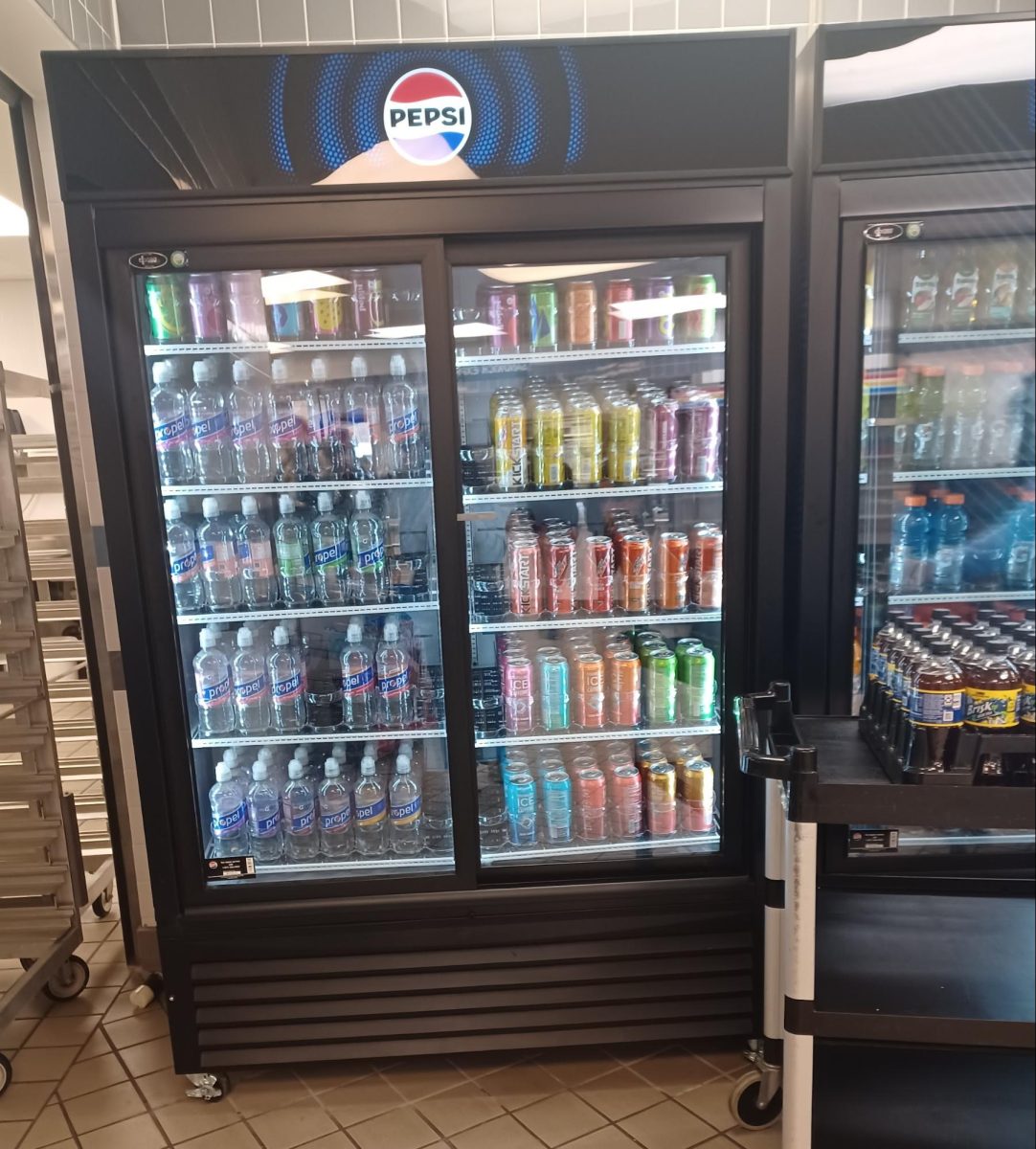2025. It’s a bustling Saturday morning in the local comic book shop in St. Charles. A group of adult men flip through the back issues, briefly examining the cover before flipping into the next one, chuckling at the prices. A confused mother asks the clerk what books are appropriate for his Pokemon-loving eight-year-old. A college-age student waits behind her at the counter, here to pick up issues that he has asked the store to pull from stock ahead of time. A smart idea too, as books like Absolute Batman, DC K.O. and One World Under Doom sell out quickly on shelves. At the shelf, one of the older men grabs a few bagged versions of the same comic book, the cover obstructed by the packaging.
But back in 1993, this would be considered a disastrously slow day. Superman had just been killed, Batman’s back was broken and Wolverine had his adamantium skeleton torn out of his body by Magneto. Despite this, comics were flying off the shelves, fueled by speculators, people who bought comic books en masse, hoping that they would be worth significantly more money sometime in the future, some going as far as to stake their children’s college funds on these investments. Companies like Marvel, DC and Image Comics knew this well, funding new #1 issues of comic books, hoping that speculators would buy tons in the hope they could be as valuable as Action Comics #1 or Detective Comics #27, the first appearances of Superman and Batman, respectively, were at that time. Unfortunately for the speculators, these comic books never really proved to be worth the amount they paid for them.
“I thought these new comics were so cool,” math teacher Matt Smith said. “The comic book Generation X came out when I was younger, and I got it with a foil cover and everything. I thought it would be worth a fortune when I was older. I just checked recently, and it’s not worth anything of note.”
Eventually, once it became apparent that many of these investments wouldn’t pay off, speculators moved on from the comic book industry and on to other fads. This led to a seismic downturn for the American comic book industry. Two-thirds of the comic book shops open at that time went out of business during the crash. Thousands of employees lost their jobs, and Marvel Comics declared bankruptcy.
From there, the industry underwent a flurry of changes and shifts that have now left readers with the market we see today, with graphic novels and trade paperbacks being the most popular ways to read comics, digital apps with the entire back catalogs of publishers available like a streaming service, price hikes for single issues, and the re-orientation of characters to appeal to moviegoers who enjoyed the films of the 2010s superhero movie boom. These were all seismic shifts, but none were more radical than the change in the ways stories are told.
In 2000, readers learned of something new that would soon hit shelves of comic stores. It was titled Ultimate Spider Man by relative newbie writer Bryan Michael Bendis about Spider Man in the modern day USA as opposed to Marvel Comics’ usual floating dates. When it eventually arrived at stores it sold like hotcakes, but readers soon found that it was a distinctly interesting book compared to contemporary titles.
“Every older comics reader remembers the Silver Age-silliness,” Graham Cracker Comics employee Sean Hronek said. This is because of a former government body called the Comics Code Authority (CCA), which required that comic books always end with the villain, who was often some ridiculous science fiction enemy with a corny plan due to other regulations, being locked up in jail at the end of every issue. As such, plots were all self-contained and each issue was a new story. Eventually, the CCA lost their grip on the comics industry during the 1960s and ‘70s, but plots still tried to be self-contained, as most people still bought comics from a newsstand rack, out of order and just getting what was available. But not Bryan Michael Bendis’s comics.
Bendis pioneered something called writing for the trade, where instead of writing comics that were satisfying to follow issue to issue, they were focused on creating an experience that was more cohesive when read like a graphic novel when collected into a trade paperback. Trade paperbacks collect multiple issues, typically 5-12, in one paperback book sold in comic book shops, and notably, bookstores. Bendis knew that single issues were on their way out as methods of storytelling, and invested in this new style.
“You almost can’t read his books month to month,” Hronek said. “No offense to the man, but you can’t really read his stuff outside of a trade, because of the pacing and the way it is written. But as for most other writers, even when they’re writing for the trade they always try to pace things so that each issue feels like it would be a complete chapter in a novel, and could progress in that chronological order.”
It is noteworthy that manga has been dominating trade paperbacks in American bookstores due to lower cost and smaller form factor, which has led to the big two publishers having to try and deviate from the traditional trade paperback.
“DC started it, and Marvel started to play catch-up on it,” Hronek said. “They sell evergreen and famous stories. All-Star Superman, Long Halloween, Arkham Asylum and so on and so forth, packaged at what is essentially manga size, and sold at $10 and sold in both comic shops and bookstores. Those have been extremely popular, because the price is right, and the bang for your buck in terms of what you’re getting is always great. DC found massive success with that, and Marvel is struggling to catch up with that right now.”
Prices in comics are generally a heavy contributor to how storytelling has changed. When analyzing consumer habits compared to the median price of a comic book, that being around $5, it makes sense that most comics that take this chapter-like approach are popular. When paying five dollars a pop for a single comic book, you want a complete experience that can read well on its own.
“Look at the current Ultimate Spider-Man (a different series than Bryan Michael Bendis’s Ultimate Spider-Man) run by Jonathan Hickman,” Hronek said. “As a book, it reads fine month to month, but when you get the trade and read it all back-to-back, you can really understand what he’s going for in those stories.”
Other forms of comics have always had this sort of approach of creating a satisfying product in their own right, not just comic books. When you read a Garfield comic strip, you expect to laugh, and since that comic is published daily, it usually satisfies a little bit. Webcomics also take this approach.
Another thing that the comic book industry learned from the webcomic explosion of the early 2010s was the necessity of offering comics online, on-demand.
Marvel and DC have created mobile/desktop apps that function like streaming services that offer their entire back catalog of comic books, from the inception of the company to the second-most recent issue for all of their currently published titles. These all come at a price generally below that of just one trade paperback every month. However, consumer preferences regarding physical copies of comics and digital copies are divided.
“I prefer reading digitally compared to physically reading a comic,” freshman Will Tice said. “It’s much easier to bring your phone anywhere than an easily ruinable single issue comic book.” Combined with the fact that it’s far easier to store something on the cloud than it is to find something in a pile of single issues, some people’s preference for digital comics is understandable.
However, readers are not unanimous in this opinion, many preferring the tactile appeal of a comic book.
“I like being able to physically turn a page, and being able to flip back and forth without having to wait for anything to load,” Smith said.
This dichotomy is also reflected on a large scale among comic book readers. According to a poll from GVC Research, about 54% of comics fans prefer physical comics, while 36% prefer digital comic books.
Exclusively on these mobile apps, the big two publishers of Marvel and DC comics have started online exclusive series that are released weekly, similar to webcomics. The stories are typically slice-of-life stories and contained within themselves. However, these aren’t the only comics Marvel and DC publish that try to be mostly self contained with their storytelling.
An increasing number of writers creating comic books being published by major publishers have begun writing self contained stories that allow readers to jump in almost anywhere, with any issue. A complete but shorter story is told within the issue, leaving readers with a full story and a hook to come back each week. The most notable of these books is the new run on the primary Batman title by Matt Fraction, which has been selling incredibly well, with issues one and two holding the second and fourth slots on ICv2’s top 50 best selling comics of Q3 2025.
So is this likely the direction that comic books are heading? It’s too early to make any major conclusions yet. For the past 100 years, comic books and their surrounding communities have enjoyed some of the most interesting and innovative stories mankind has ever had to offer.
“Comics are a really cool medium through which to tell stories,” Hronek said. “It gives people really unique options as to how they want to experience those stories compared to many other artistic and narrative mediums. And this particular moment is one of the best times you can get into comics, even if you aren’t particularly a superhero person.”
So take a look at what American comics have to offer. Maybe you saw a cool MCU or DCU movie over the summer and were interested by the characters in the film, so ask the clerk at your local comic book shop. While you’re there, dig through their discount bin or back issues, and see what catches your eye. You might find your next favorite story hiding in the rough.







